Then and Now at the US Open: Returning to Arthur Ashe Stadium 27 Years After Its Debut
- Ken Smoller

- Aug 24
- 7 min read

All text and photos by Ken Smoller (@stadiumvagabond)
All things evolve – people, cities, cuisine, music and, of course, sporting venues. Almost every stadium that stands for decades morphs from its original design for a variety of reasons. Some were built under financial constraints and additions are added as the budget becomes more flexible. Other sporting venues have bells and whistles added over time as architects, engineers and marketers devise new ways to appeal to increasingly discriminating fans. Cynics might argue that many stadium renovations are primarily designed to capture the wallets of wealthy ticket buyers, especially corporate clients who splurge on luxury amenities. From a more benign perspective, operators of sporting venues observe how they play in realty and tweak design based on fan, player, coach and media input over the years.
Most notably, a retractible roof was added to Arthur Ashe Stadium after it debuted in 1997
Whatever the reason, I always delight in photographing stadiums over time and comparing how they have changed. Last year, I had the privilege of returning to the US Open tennis tournament for the first time since my initial visit 27 years earlier. Unsurprisingly, the Billie Jean King Tennis Center in Flushing Meadows in Corona Park in Queens, New York had changed dramatically since it opened in August of 1997, as revealed in my photos from both tournaments. Unsurprisingly, the USTA Billie Jean King National Tennis Center in Flushing Meadows–Corona Park, Queens, New York, had changed dramatically since Arthur Ashe Stadium opened in August 1997, as revealed in my photos from both tournaments
Like New York City itself, the USTA Billie Jean King National Tennis Center has transformed dramatically since 1997.
In August of 1997, the United States Tennis Association (USTA) debuted its brand-new flagship tennis facility in Flushing Meadows–Corona Park in Queens, New York. The crowning jewel of the redevelopment was the $254 million Arthur Ashe Stadium, the largest tennis stadium in the world, with a capacity of 23,771. It was a vast improvement over its predecessors—Louis Armstrong Stadium next door, and the West Side Tennis Club at Forest Hills in the Forest Hills neighborhood, about two miles away.
Left: The West Side Tennis Club at Forest Hills, now a concert venue adjacent to the private tennis club. Right: Louis Armstrong Stadium in 1997 before being redeveloped.
The new stadium court was named for Arthur Ashe, the tennis and civil rights legend who died in 1993 from complications related to AIDS. While the massive tennis stadium was hailed as an instant fan favorite, it could not withstand the wrath of Mother Nature’s frequent late-summer rainouts. In 2016, a $150 million retractable roof was added, ensuring that tennis would keep flowing, regardless of the weather.
Originally built without a roof, Arthur Ashe Stadium was named for tennis and civil rights icon, Arthur Ashe.
There was a lot of pomp and pageantry surrounding the opening of Arthur Ashe Stadium in 1997. Prior to its official debut, the USTA hosted Arthur Ashe Kids’ Day, featuring a mix of up-and-coming players, retired stars, and celebrities from music and television.
Top: Hanson, the pop band of three brothers from Oklahoma, performed their hit 'MMMBop' before a crowd of adoring and screaming fans. Bottom: Nickelodeon TV stars from "Good Burger" — Right: Kenan Thompson (who later became the longest-tenured cast member of Saturday Night Live) and Kel Mitchell."
A number of past, present, and future tennis legends entertained the crowd with exhibition matches and by hitting balls with lucky kids. Top row (L–R): Andre Agassi, Martina Hingis, Malivai Washington, Venus Williams, Pete Sampras. Second row: A doubles exhibition featuring 17-year-old Venus Williams and 15-year-old Serena Williams vs. Luke and Murphy Jensen. Third row: Gabriela Sabatini and John McEnroe.
There also were aging celebrities on hand that day, including a couple that may not have been welcome at a family event had their full life stories been known at the time.
L to R: Comedian and Actor Alan King (1927-2004); TV Host Pat O'Brien; Comedian, Actor and former Pudding Pop Spokesman Bill Cosby.
On the official opening night of August 25, 1997, fans were treated to pop superstar Whitney Houston’s performance of “One Moment in Time”, as well as speeches and appearance from tennis royalty and local politicians. The first competitive match on the court that night featured Tamarine Tanasugarn defeating Chanda Rubin in straight sets (6–4, 6–0). Later, Monica Seles efficiently beat Kristie Boogert 6–1, 6–2.
Top Row: Panoramic view of Arthur Ashe Stadium during its official inauguration and fireworks celebrating its opening; 2nd Row: John McEnroe giving a tribute to Arthur Ashe and Whitney Houston singing “One Moment in Time”; 3rd Row: The “Parade of Champions” featuring former US Open champions such as Billie Jean King, Steffi Graf, Chris Evert, Monica Seles, Boris Becker, Martina Navratilova, etc.; Bottom Row: Monica Seles shakes hands with Kristie Boogert after defeating her in straight set.
The first champions at Arthur Ashe Stadium in September 1997 were Patrick Rafter and Martina Hingis. Hingis’s victory, however, was somewhat upstaged by the surprising finals run of then-17-year-old Venus Williams. Soon after, Venus—and later her sister Serena—would go on to dominate the tennis scene for decades.
Patrick Rafter and Martina Hingis were the first singles champions at Arthur Ashe Stadium, but Venus Williams may have stole the show with her suprising run to the Finals at age 17.
After 27 years, Arthur Ashe Stadium remains an iconic sporting venue. It continues to draw capacity crowds for major matches, often filled to the roof with raucous fans. Some spectators report a sense of vertigo from the upper rows, but those seats are rarely empty during the biggest moments
The cavernous Arthur Ashe Stadium still attracts huge crowds for marquee US Open matches, such as the victory by American star Frances Tiafoe shown above. These days, the stadium even features a house DJ to keep the energy high.
Prior to the debut of Arthur Ashe Stadium in 1997, Louis Armstrong Stadium served as the main stage for the US Open. The stadium originated as the Singer Bowl, which was built for the 1964–65 World’s Fair. In 1973, it was subdivided into two venues — the 18,000-seat Louis Armstrong Stadium and the smaller 10,000-seat Grandstand Stadium. After being replaced as the "center court" by Arthur Ashe Stadium, Armstrong was reduced in capacity to 10,200 seats by removing its upper tiers. In 2016, Armstrong was demolished and replaced in 2018 with a new 14,000-seat Louis Armstrong Stadium, featuring a retractable roof.
Louis Armstrong Stadium over the years: Top row – 1997 and 2009; Bottom row – the rebuilt Armstrong Stadium in 2024.
The original Grandstand Stadium side of the old Singer Bowl was remodeled during the late 1990s, but ultimately demolished in 2016. To replace it, the new 8,125-seat Grandstand Stadium was built on the southwest corner of the grounds and opened in time for the 2016 US Open.
Top Row: Old Grandsand Stadium in 1997 (left) and 2008; Bottom: New Grandstand Stadium on the other side of the grounds.
But I digress: The year before I photographed the U.S. Tennis Center and Arthur Ashe Stadium, I had the opportunity to photograph the stadiums at two other Grand Slam venues — the All England Lawn Tennis and Croquet Club (Wimbledon) in London and Roland Garros (French Open) in Paris. Both facilities have undergone massive changes since my 1996 visits.
Top: All England Lawn Tennis and Croquet Club (Wimbledon) in London. Bottom: Roland Garros (French Open) in Paris. All photos are from 1996.
When Arthur Ashe Stadium debuted in 1997, the entire grounds of the USTA National Tennis Center were reconfigured. Very few of the smaller courts and facilities from that era remain in their original form today. Over the years, the USTA has continually upgraded the sprawling campus—now known as the USTA Billie Jean King National Tennis Center—ensuring that it remains a world-class venue.
Site Plans of the USTA National Tennis Center (1996-left) and the USTA Billie Jean King National Tennis Center (2004).
Aerial photos from commercial planes in 1996 and 2023 show the substantial changes to the USTA Billie Jean King National Tennis Center, as well as the former and current ballparks of the New York Mets — Shea Stadium and Citi Field.
During the 1996–1997 renovation of the USTA National Tennis Center, not only was Arthur Ashe Stadium constructed, but the entire grounds and secondary courts were redeveloped. Very little of the 1997-vintage layout remains today.
A tour of the secondary courts at the USTA Billie Jean King National Tennis Center in 2024. The bottom-row photos were taken from Arthur Ashe Stadium in 1997 and 2024, looking toward the Unisphere on the grounds of the 1964–65 World’s Fair in Flushing Meadows–Corona Park.
Scenes from the grounds of the Billie Jean King National Tennis Center during the 2024 US Open.
Another variety of 'Grand Slam' awaits thirsty patrons at the mixed-drink stands throughout the grounds.
Beyond the tennis stars, one constant at the U.S. Open is the steady stream of both the famous and the infamous in the most exclusive seats. Here are photos of a few such sightings, from 1997 and 2024.
Top Left: New York Knicks Hall of Famer Patrick Ewing at the 1997 U.S. Open. Top Right and Bottom Left: The luxury suite of real estate developer Donald Trump in 1997, before his ventures into reality TV and politics. His guests included actor Leonardo DiCaprio, musician Lenny Kravitz, and illusionist David Blaine. How many more can you identify? Bottom Right: At the 2024 U.S. Open, the cast of the TV show 'Scandal', including Shonda Rhimes, Scott Foley and Tony Goldwyn.
Ultimately, the U.S. Open is not just about the stadiums, celebs or overpriced cocktails, but about the players who play in the Grand Slam tournament. Below are photos of the tennis professionals from around the world who competed in the 2024 tournament. While the stadiums, courts and grounds will continue to evolve, the constant will be top quality competitive tennis at each U.S. Open.
A Final Digression — Just as the home of the US Open has radically changed over the years, its baseball neighbor, the New York Mets, has also shifted their world since 1997. Shea Stadium, built in the same era as the old Singer Bowl, debuted in 1964. It was home to the New York Mets from 1964 to 2008, the New York Jets from 1964 to 1983 and the New York Yankees in 1974 and 1975. The Mets moved next door to Citi Field in 2009 and Shea Stadium was demolished later that year.
Top row: Citi Field viewed from the boardwalk connecting it to the USTA Billie Jean King National Tennis Center, and a panoramic view during the final month of Shea Stadium's existence, with Citi Field under construction next door. Middle row: Home plate views of Shea Stadium in 2003 and Citi Field in 2009. Bottom row: The iconic home run apple at Shea Stadium (left) and its replacement at Citi Field.
© 1997–2024 Ken Smoller/Stadium Vagabond. All rights reserved.
































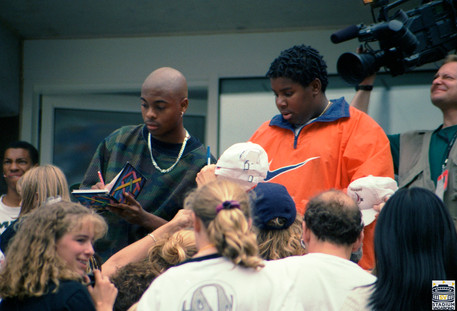











































































































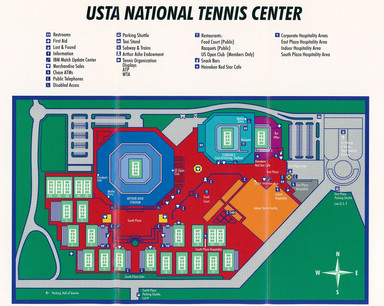































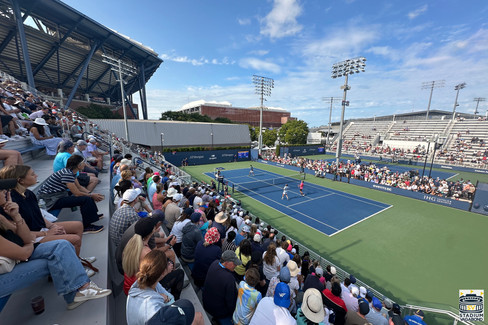































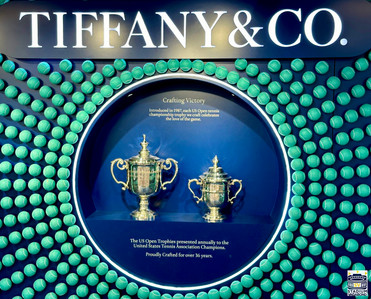







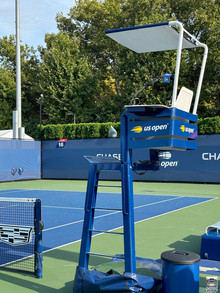

















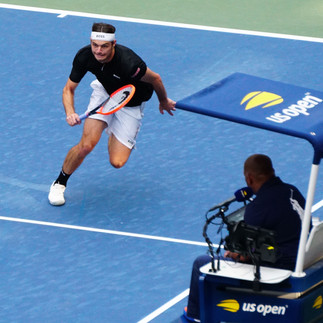


















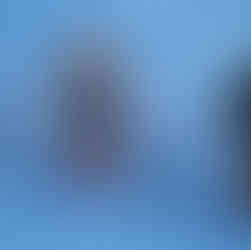










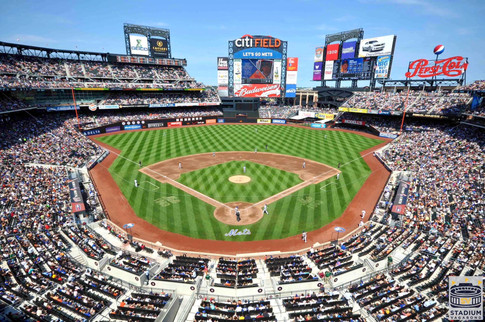




Interesting insights! I always feel that along with players’ performance, understanding conditions like the Dubai International Stadium pitch report batting or bowling makes a big difference in how the game unfolds. Looking forward to more such detailed coverage.
Also Read:
Top 10 Cricketers Who Own Private Jets (Updated 2025)
Top 10 Best Batsman in the World | Currently Ranked